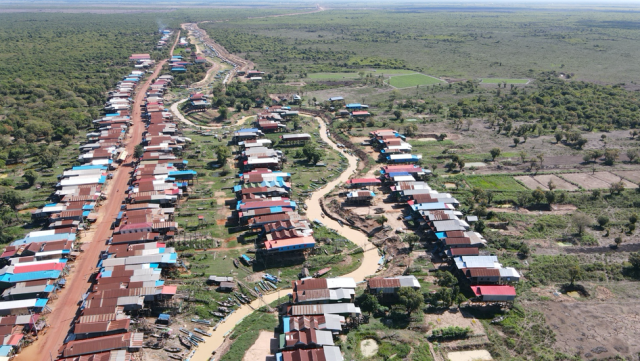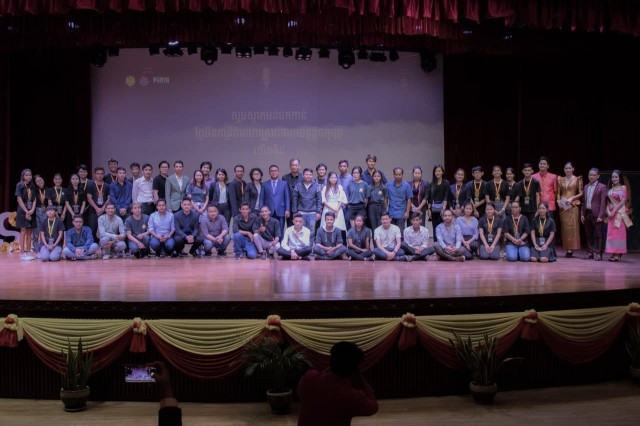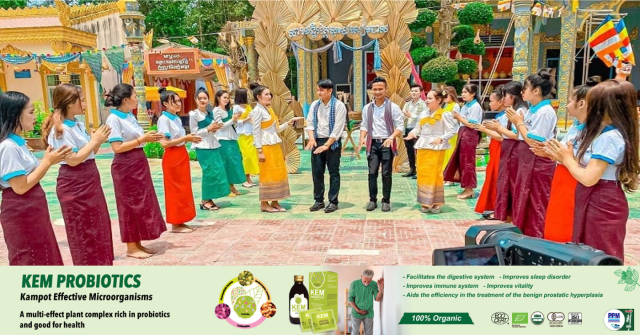Toward the Return of Sleeping Beauty?

- Cambodianess
- August 22, 2020 3:50 AM
Once upon a time, there was a kingdom in which agriculture was queen. The green rice fields with palm trees on their levees, the market gardening on the banks of muddy rivers, the countless orchards and spice plantations were sufficient, along with fishing, poultry and market-animal farming, to feed not only farmers but also the whole country.
That era during which an overwhelming majority of the population lived in the countryside, nearly economically self-sufficient, is today but a distant memory passed on and totally idealized in primitive-style paintings hung by nostalgic city residents in their living rooms with concrete walls.
In the early 2000s, Agriculture—the sector that had reigned supreme—withered, handing over the reins of the economy to tourism, construction, service and industrial sectors. The countryside lost its young people gone to earn a living in cities or abroad.
The number of small plots of land, which enabled numerous farmers and their families to earn a living, went down to the benefit of large farms producing agricultural raw materials hardly or not processed meant for export.
Cities expanded and, in order to feed a constantly growing population, vegetables and other food products, which used to be brought in from the countryside nearby, had to be imported.
For its prosperity, Cambodia did not or hardly did need, one thought, agriculture since money from unbridled business activity—mainly coming from China—would be enough to buy outside the country all food products needed to meet the population’s needs.
However, in the space of a few months, the COVID-19 pandemic turned game changing.
Being forced to temporarily close the borders to Vietnamese and Thai products, one soon realized that, without them, the country was heading toward a food shortage.
By putting out of work thousands of workers in tourism and manufacturing, and by having thousands of migrant workers forced to return to the country, one suddenly remembered that agriculture could use this manpower.
From that moment on, official announcements, expert consultations and mobilization plan announcements multiplied as if they were as many as declarations of love to the fallen queen of the economy.
“As always, in times of crisis,” an international expert in the agricultural sector told us, “one goes back to basics, and therefore to food, and therefore to agriculture.” A sector that—and of course not only in Cambodia—had been neglected, viewing it as a low-wage “labor pool” for other economic activities. But one must not forget that agriculture is an “ocean liner” and that having it change direction takes a generation—not a few months—and that the agriculture of tomorrow will not be the agriculture of yesterday.
Listening to declarations by officials and organizations involved, one would believe that what must be done to get agriculture back on its feet is known and that all that needs to be done is to get on a war footing.
It should be noted that this could have been done earlier, without being compelled by the pandemic.
In any case, focusing only on agri-food business and exports, which are necessary elements but not sufficient to regenerate the skill base of the agricultural sector, is not enough.
All producers must be involved, organized within sectors of production, consulted and listened to. They must be involved in the implementation of training programs adapted to today’s clean, mechanized, linked agriculture.
At the beginning of the cycle, there are the soil and people who grow in it. At the end of the cycle, which must be as short as possible, there is the consumer and all his demands for quality products.
It is not by listening to experts, politicians and middlemen that we will wake up Sleeping Beauty as it is often these same people who brought it to this anemic state.















